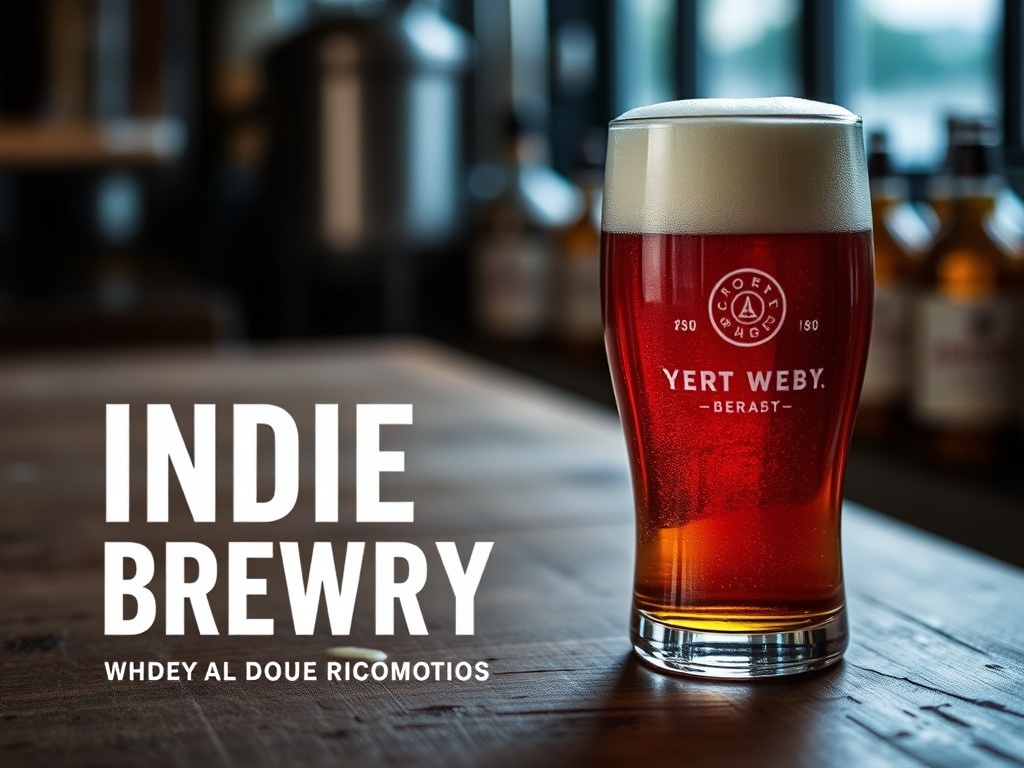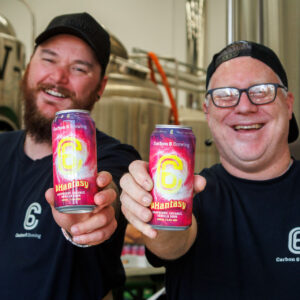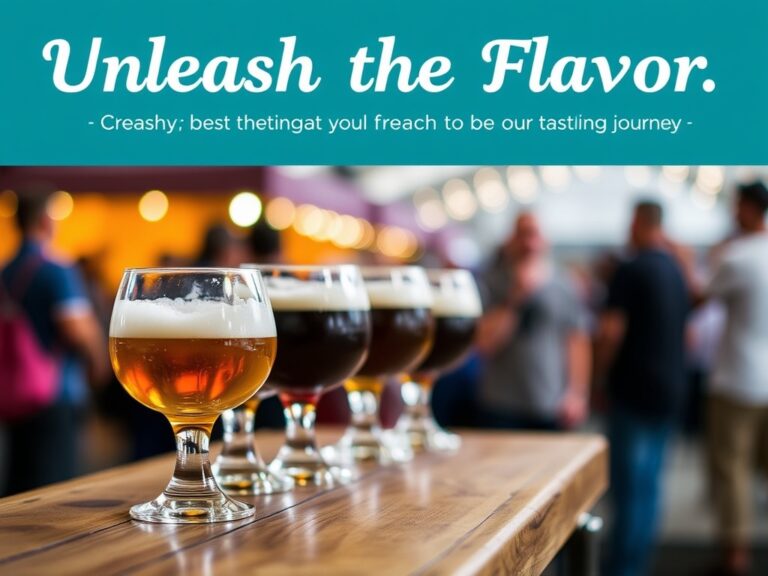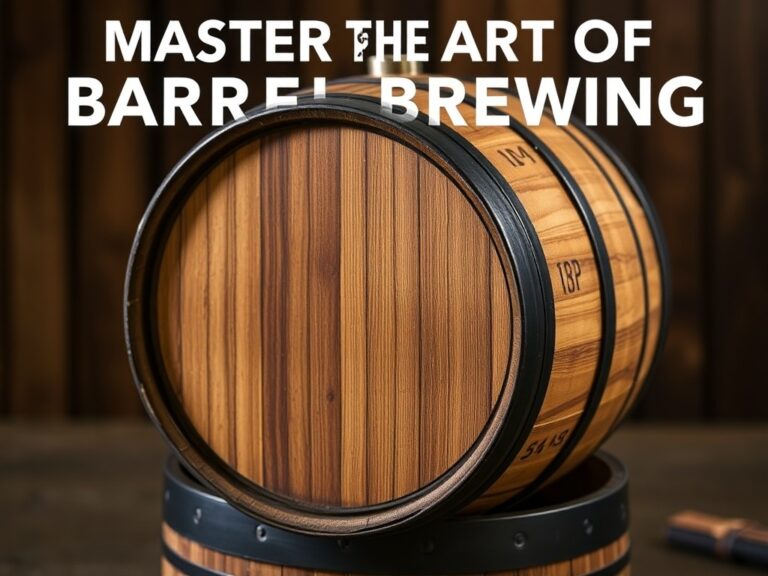Indie Ale Craft Brewery: How Passion-Driven Innovation is Shaping the Future of Independent Beer Enthusiasm

Introduction
In my experience with indie ale craft brewery, I’ve been fascinated by how small, passionate breweries are redefining what it means to craft beer today. When I first started exploring the world of independent beer, I quickly realized that these breweries are more than just producers—they’re innovators driven by a genuine love for their craft. I want to share what I’ve learned about how indie ale craft brewery culture is shaping the future of beer enthusiasm through passion and innovation.
From what I’ve seen, these breweries thrive because they prioritize creativity, community, and authenticity. I’ve found that their stories are as compelling as their beers, and I believe their approach is inspiring a new wave of beer lovers around the world. In this article, I’ll walk you through how indie ale craft brewery brands are leading a revolution—one pint at a time.
The Rise of the Indie Ale Craft Brewery Movement
Understanding the Indie Ale Craft Brewery Landscape
In my research, I’ve discovered that the indie ale craft brewery movement has grown exponentially over the past decade. Small breweries are popping up everywhere, fueled by entrepreneurs who want to push boundaries and create unique flavors. From what I’ve learned, these breweries often operate with a focus on quality over quantity, emphasizing local ingredients and sustainable practices.
I recommend exploring the stories behind some of the most successful indie ale craft brewery brands—many started as small passion projects and have now become community staples. What makes them stand out, in my opinion, is their unwavering commitment to innovation and authenticity, which resonates deeply with beer enthusiasts seeking something fresh and genuine.
Community and Culture as Pillars of Indie Brewing
From my experience, the strength of an indie ale craft brewery lies in its community roots. These breweries tend to be hyper-local, fostering connections with their neighbors and supporting local artists, farmers, and events. I’ve found that their success is often rooted in the relationships they build, which creates a loyal customer base eager to try new brews and share their experiences.
In addition, the culture of collaboration within the indie brewing scene is remarkable. Many indie ale craft brewery owners actively share ideas and techniques, pushing the boundaries of traditional brewing. This openness fuels continuous innovation, making the industry vibrant and exciting. I believe that this community-driven approach is one of the key factors that will keep indie breweries thriving in the future.
Innovative Trends in Indie Ale Craft Breweries
Flavor Innovation and Experimental Brews
One of the most exciting aspects of indie ale craft brewery is their fearless experimentation. I’ve personally sampled beers with ingredients like exotic fruits, herbs, and even unconventional fermentation techniques. From my perspective, these breweries are redefining flavor profiles, creating beers that surprise and delight even the most seasoned palates.
I’ve discovered that many indie breweries are embracing hybrid styles, blending traditional ales with modern twists. For example, I’ve enjoyed IPAs infused with local honey or sour ales fermented with wild yeast strains. These innovations showcase the creativity and passion driving the indie ale craft brewery scene, making each visit to a local taproom an adventure.
Sustainable Practices and Eco-Conscious Brewing
From what I’ve learned, sustainability is increasingly important for indie ale craft brewery owners. Many are adopting eco-friendly practices like composting, using renewable energy, and sourcing ingredients locally to reduce their carbon footprint. I recommend seeking out breweries that prioritize sustainability, as it adds a meaningful layer to the craft experience.
In my experience, these eco-conscious efforts not only help the environment but also strengthen the brewery’s community ties. I believe that sustainability and innovation go hand in hand in shaping the future of indie brewing, inspiring consumers to support brands that align with their values. This shift toward responsible brewing is a trend I see gaining momentum, and I’m excited to see how it evolves.
The Role of Passion and Community in Indie Ale Craft Brewing
Passion as the Heart of Innovation
In my journey exploring indie ale craft brewery, I’ve found that passion is what truly fuels innovation. Many founders started brewing in their garages or home kitchens, driven by a love for beer and a desire to experiment. I’ve spoken to several brewers who told me that their passion keeps them pushing boundaries, even when faced with challenges like funding or distribution.
From my perspective, this genuine enthusiasm is contagious. It fosters a culture of continuous learning and experimentation that results in unique beers and memorable experiences. I believe that passion-driven innovation is what will keep the indie ale craft brewery scene vibrant and evolving for years to come.
Community Support and Growth
I’ve discovered that community support is integral to the success of indie ale craft brewery. Small breweries rely heavily on local patrons, events, and social media to grow their brand. I recommend engaging with your local indie breweries—attend their tap takeovers, participate in festivals, and share your experiences online.
In my experience, this sense of community creates a feedback loop that benefits both the brewery and beer lovers. It’s inspiring to see how these breweries foster a sense of belonging and shared passion. I believe that a strong community foundation will continue to be a cornerstone for indie breweries, enabling them to innovate boldly while staying true to their roots.
Challenges and Opportunities Ahead
Facing Market Competition and Regulatory Hurdles
In my opinion, one of the biggest challenges for indie ale craft brewery is navigating a crowded market. Larger corporations have entered the scene with their own craft lines, making it harder for small breweries to stand out. I’ve found that regulatory hurdles, such as licensing and distribution laws, can also pose barriers, especially for new entrants.
However, I believe these challenges present opportunities for innovation. Breweries that can leverage their unique stories and focus on local engagement are more likely to thrive. I recommend that indie breweries embrace their authenticity and community ties as differentiators in this competitive landscape.
Embracing Digital and Global Opportunities
From my research, I see a bright future for indie ale craft brewery brands that embrace digital marketing, e-commerce, and social media. The pandemic accelerated online sales and virtual tastings, creating new revenue streams. I’ve personally ordered beer from some indie breweries online and found it to be a rewarding experience.
Looking ahead, I believe that the global reach of the internet offers indie breweries an incredible opportunity to connect with a worldwide audience. I recommend that smaller breweries invest in their digital presence, share their stories, and build online communities. This approach can help preserve their independence while expanding their influence.
References and Resources
Throughout my research on indie ale craft brewery, I’ve found these resources incredibly valuable. I recommend checking them out for additional insights:
Authoritative Sources on indie ale craft brewery
-
Brewers Association
BrewersAssociation.orgThis site offers comprehensive industry data, advocacy info, and trends specific to indie breweries, making it essential for understanding market dynamics.
-
BeerAdvocate
BeerAdvocate.comA community-driven platform with reviews and discussions that shed light on innovative indie beers and brewing techniques.
-
National Beer Library
NationalBeerLibrary.orgOffers historical and cultural insights into brewing, including the evolution of indie breweries and their impact on beer culture.
-
Craft Brewing Business
CraftBrewingBusiness.comFocuses on industry trends, business strategies, and innovation opportunities within the indie brewing scene.
-
Brewbound
Brewbound.comProvides news and insights on craft brewing startups, including indie breweries’ market strategies and innovation stories.
-
The Heritage Foundation – Brewing Industry Reports
Heritage.orgProvides insights into regulatory policies affecting indie breweries and how they adapt within evolving legal frameworks.
-
CraftBeer.com
CraftBeer.comOfficial site of the Brewers Association, packed with resources, brewing tips, and stories from indie breweries worldwide.
Frequently Asked Questions
What makes an indie ale craft brewery different from larger commercial breweries?
In my experience, indie ale craft breweries are characterized by their independence, smaller scale, and a focus on artisanal brewing techniques. Unlike large commercial breweries, they often prioritize quality, innovation, and local ingredients, which results in unique flavors and a more personal connection to their community.
How does passion influence innovation in an indie ale craft brewery?
From my perspective, passion is the driving force behind every innovative idea in indie breweries. When brewers love what they do, they’re more willing to experiment with new ingredients, styles, and techniques, which leads to exciting and original beers that stand out in the market.
What are some emerging trends in the indie ale craft brewery scene?
I believe that sustainability and environmental responsibility are becoming central to indie breweries. Many are adopting eco-friendly practices, and I recommend supporting breweries that prioritize these values. Additionally, flavor experimentation and blending brewing styles continue to push the boundaries of traditional beer.
How can I support my local indie ale craft brewery?
In my experience, visiting taprooms, participating in events, and sharing your favorite beers on social media are great ways to support indie breweries. I recommend engaging with their community and spreading the word about their innovative beers to help them grow and thrive.
Conclusion
In conclusion, my research on indie ale craft brewery has shown that passion, community support, and a drive for innovation are shaping the future of independent beer enthusiasm. These breweries are not only creating exceptional, unique beers but are also fostering a culture of authenticity and sustainability that resonates with modern consumers. I hope this guide helps you appreciate the vibrant world of indie brewing and inspires you to explore and support these passionate craft producers. Based on my experience, I believe that the indie ale craft brewery scene will continue to grow, innovate, and influence the broader beer industry for years to come.
Find out more information about “indie ale craft brewery”
Search for more resources and information:






